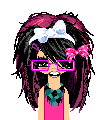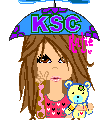Recently, Whyville participated in The Kids' Science challenge, "a nationwide annual competition for 3rd to 6th graders to submit experiments and problems for REAL scientists and engineers to solve."
On Whyville, scientists from four different fields - flavor science, skateboard engineering, SETI, and water quality - spoke at almost weekly events at the Greek Theater from October 2008 through January 2009.
The scientists included Joan Harvey for flavor science, Paul Schmitt and Michael Bream for skateboard engineering, Jill Tarter, Doug Vakoch, Nathalie Cabrol, and Seth Shostak for SETI, and Adina Paytan for water quality.
The Kids' Science Challenge Clubhouse on Whyville had BBS forums for each of these four areas of science. Kids were asked to post questions about each of these areas. The winners were chosen by the scientists, themselves.
The winners were:
hikitty11 for flavor science

act123go for skateboard engineering

neonstyle for SETI

volleyga3 for water quality

deriko for water quality

Everyone that won in each category gets a beanie, and neonstyle, the first place winner, will get a physical prize.
Here are their questions and the responses by the scientists:
Flavor Science
hikitty11: Well, most people that I ask, say taste relies solely on smell. I don't relly know if I should believe them. Why would we have taste buds if you tasted with your nose? How do you taste???
Joan Harvey, flavor chemist: All flavors are perceived in the nasal passages, your tongue can only taste salty, sweet, bitter and sour. Try this experiment, eat your favorite candy and before you put it in your mouth pinch your nostrils closed and see if you can taste the flavor, then let go of your nose and see how the flavor grows. The retro-nasal passages are in the back of your mouth and that is how the flavor gets into the nose, however when you smell with your nose before eating that is called ortho-nasal and the scents go into your nostrils at the tip of your nose not in your mouth.
Skateboard Engineering
act123go: Could skateboards be one day transformed for everyday use? This could be carrying groceries, heavy objects, etc.
Paul Schmitt and Michael Bream: There are used for that today. I moved a refrigerator the other day using my board. Many people use them to ride to school or work, and several people are currently skating across the United States to raise money for charities. Skateboard wheels are also used on camera dollies to make Hollywood films, and there are many more "everyday" applications of skateboards and skateboard products. You just have to use your imagination to come up with a new use for your boards.
SETI
neonstyle:When people think of aliens, they think of things that look like people but may be green with black eyes, or something very funny looking to us. What about plants from other planets? Do we count that as extra terrestrial? Do other planets have the same plants as earth does?
Seth Shostak, SETI astronomer: Yes, since they're alive, any plants we might detect on another world would be extraterrestrial life. And just as we expect that any extraterrestrial creatures would be different from animals on Earth, so we would expect extraterrestrial plants to be different, too. It might turn out that we'll find extraterrestrial plants sooner than we find any other types of extraterrestrials, in face. Plants breathe in carbon dioxide, and breathe out oxygen. So if our telescopes detected oxygen in the air of some distant planet, we could say "Hey, there are extraterrestrial plants there!
Water Quality (had 2 winners)
volleyga3: Well I was thinking one day: once water goes down the drain, what happens to it in the sewer? It can't go into the ocean, can it?
Adina Paytan, oceanographer: Water that goes down the drain or the storm drain in most cities goes to the sewage treatment plant where it undergoes a process of removing contaminants. It includes physical, chemical, and biological processes to remove physical, chemical and biological contaminants. Its objective is to produce treated effluent suitable for discharge or reuse back into the environment. This material the supposedly "clean" treated effluent is often inadvertently contaminated with many toxic organic and inorganic compounds that are not removed. And YES it is in many cases released to the ocean or to lakes.
and . . .
Deriko: I'm one of those people who is completely baffled by the fact that bottled water is actually quite a big product! When I'm at home, I simply grab a glass, turn on the tap (let it get a bit colder first) then fill up my glass and drink! No problems, I'm perfectly healthy. Is bottled water all it's cracked up to be? Or does it actually taste "fresher"? Does it make a difference at all?
Adina Paytan, oceanographer: Depending on where you live tap water may taste metalic (from pipes) or chlorinated (from the treatment process), so bottled water may taste "fresher". There are two major down sides to drinking bottled water. First, it makes a lot of waste, and plastics require fossil fuels to produce. Second, flexible plastics contain chemicals called phthalates that keep them from being brittle and breaking. They are carcinogenic and leach into the water. We should really stop drinking it.
Congratulations to our winners! Those were great questions, and also really good answers.
The KSC is made possible by Pulse of the Planet and the National Science Foundation.
For more information, visit the Kids' Science Challenge web site, http://www.kidsciencechallenge.com.